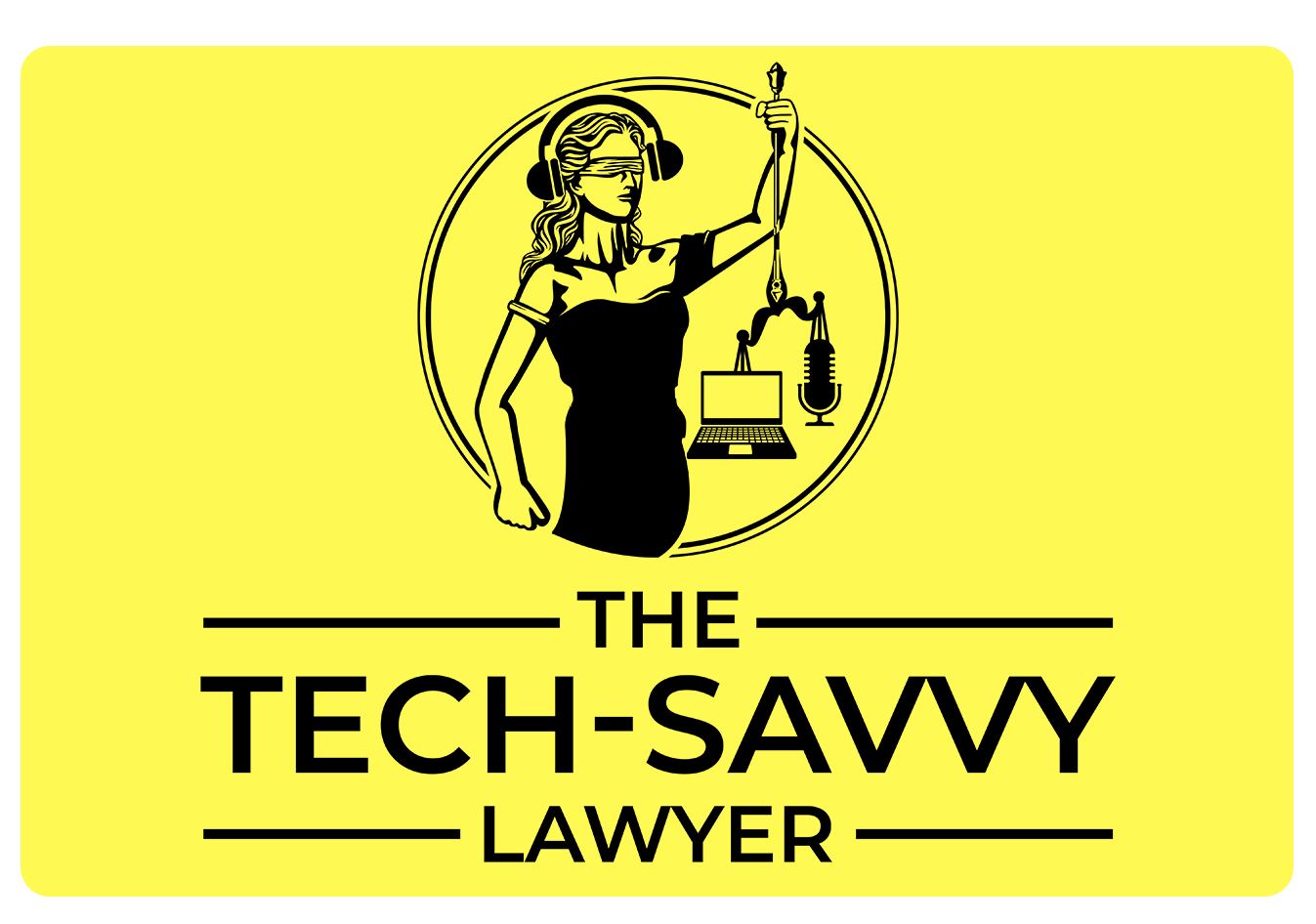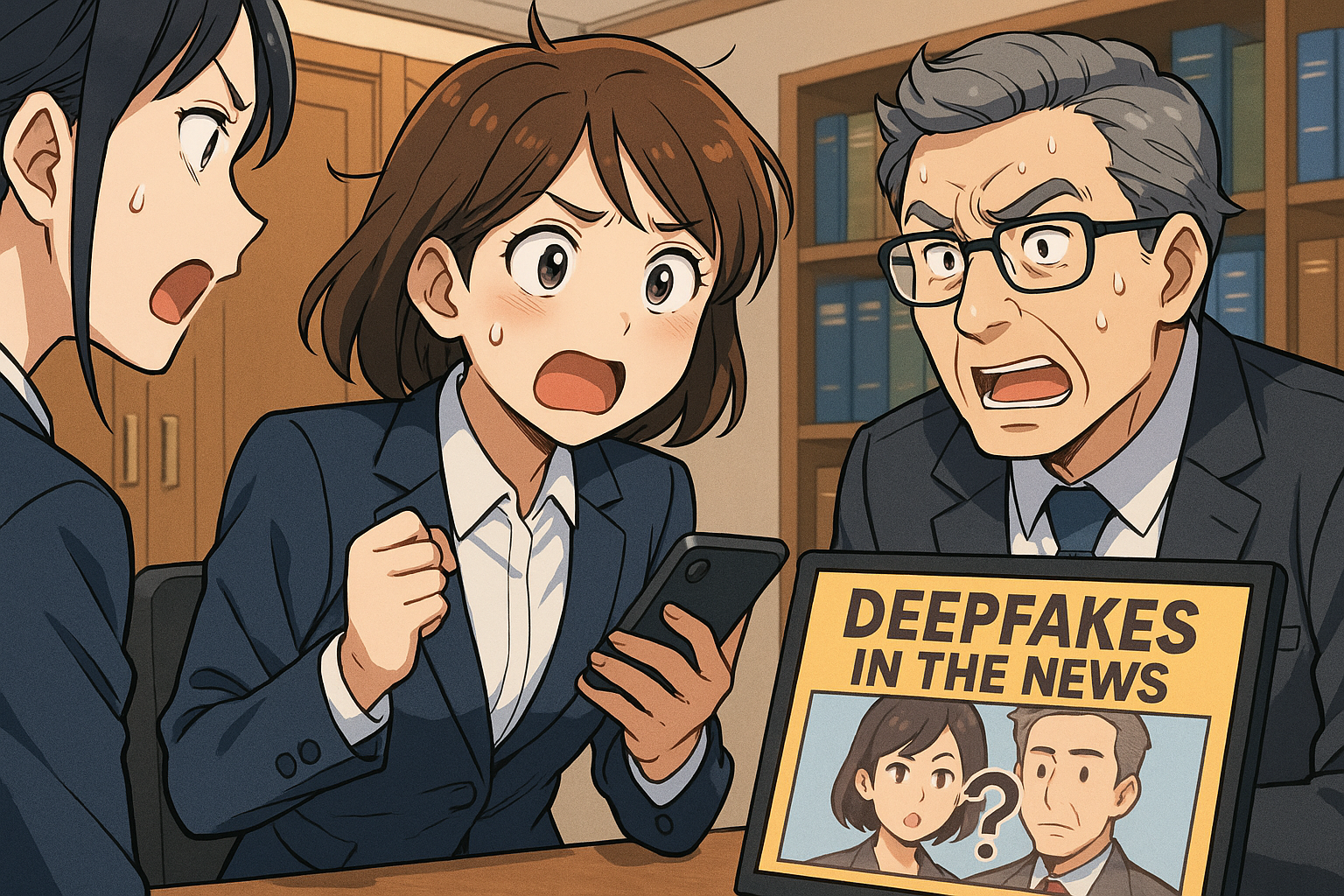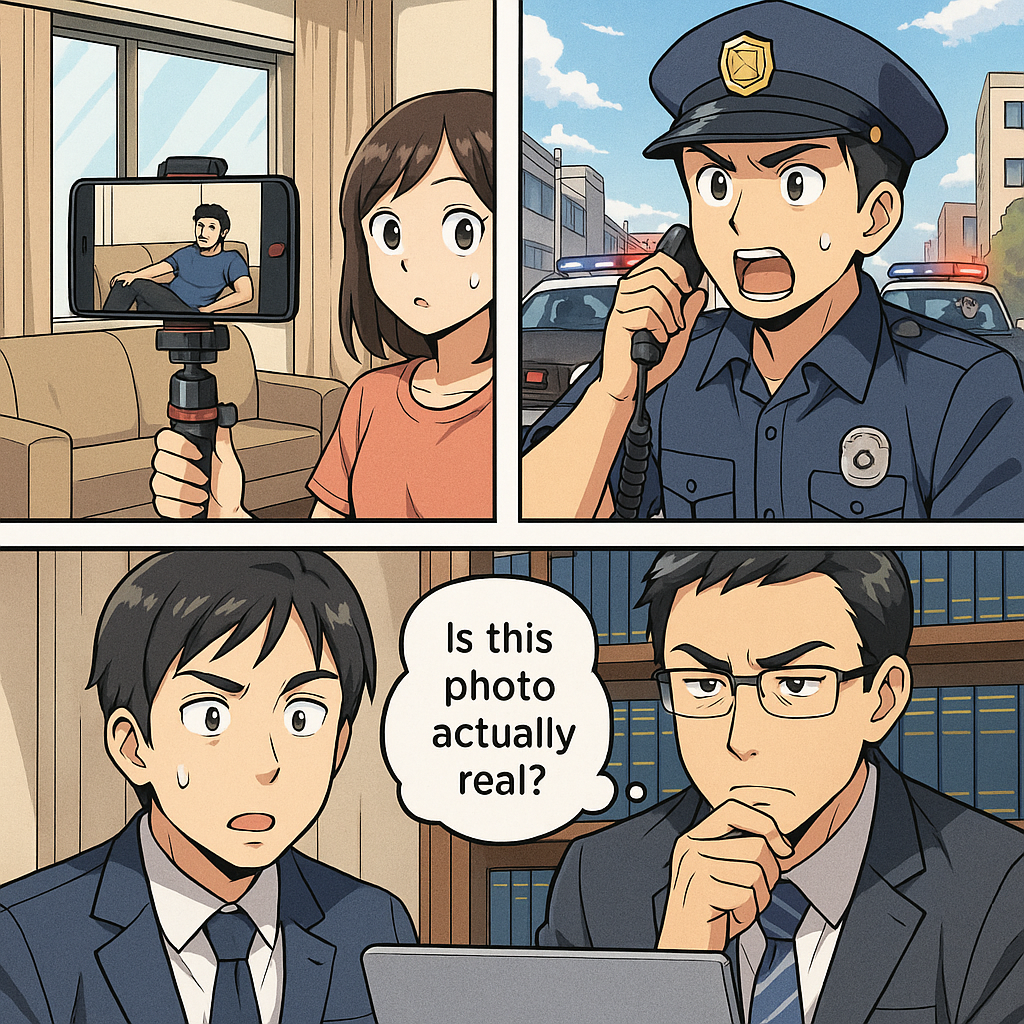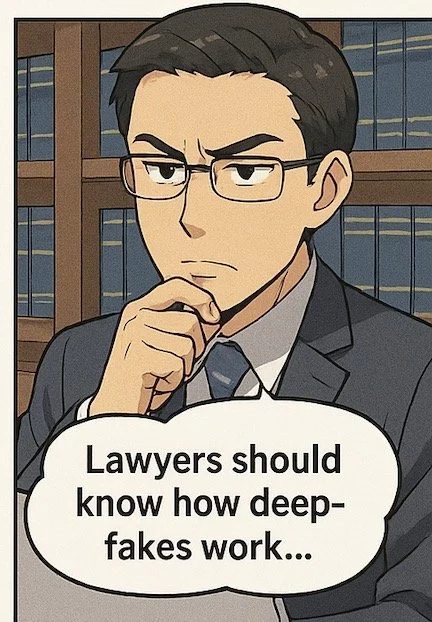MTC: Deepfakes, Deception, and Professional Duty - What the North Bethesda AI Incident Teaches Lawyers About Ethics in the Digital Age 🧠⚖️
/Lawyers need to be aware of the potential Professional and ethical consequences if they allow deepfakes to enter the courtroom.
In October 2025, a seemingly lighthearted prank spiraled into a serious legal matter that carries profound implications for every practicing attorney. A 27 year-old, North Bethesda woman sent her husband an AI-generated photograph depicting a man lounging on their living room couch. Alarmed by the apparent intrusion, he called 911. The subsequent police response was swift and overwhelming: eight marked cruisers raced through daytime traffic with lights and sirens activated. When officers arrived, they found no burglar—the woman was alone at home, a cellphone mounted on a tripod aimed at the front door, and the admission that it was all a prank.
The story might have ended as a cautionary tale about viral social media trends gone awry. But for the legal profession, it offers urgent and multifaceted lessons about technological competence, professional responsibility, and the ethical obligations that now define modern legal practice.
The woman was charged with making a false statement concerning an emergency or crime and providing a false statement to a state official. Though the charges are criminal in nature, they illuminate a landscape that the legal profession must navigate with far greater care than many currently do. The intersection of generative AI, digital deception, and legal ethics represents uncharted territory—one where professional liability and disciplinary action await those who fail to understand the technology reshaping evidence, testimony, and truth-seeking in the courtroom.
The Technology Competence Imperative
In 2012, the American Bar Association amended Comment 8 to Model Rule 1.1 (Competence) to include an explicit requirement that lawyers remain competent in "the benefits and risks associated with relevant technology." This was not a suggestion; it was a mandate. Today, 31 states have adopted or adapted this language into their own professional conduct rules. The ABA's accompanying committee report emphasized that the amendment serves as "a reminder to lawyers that they should remain aware of technology." Yet the word "reminder" should not be mistaken for optional guidance. As the digital landscape grows more sophisticated—and more legally consequential—ignorance of technology is increasingly indefensible as a basis for professional incompetence.
This case exemplifies why: An attorney representing clients in disputes involving digital media—whether custody cases, employment disputes, criminal defense, or civil litigation—cannot afford to lack foundational knowledge of how AI-generated images are created, detected, and authenticated. A lawyer who fails to distinguish authentic video evidence from a deepfake, or who presents such evidence without proper verification, may be engaging in conduct that violates not only Rule 1.1 but also Rules 3.3 and 8.4 of the ABA Model Rules of Professional Conduct.
Rule 1.1 creates a floor, not a ceiling. While most attorneys are not expected to become machine learning engineers, they must possess working knowledge of AI detection tools, image metadata analysis, forensic software, and the limitations of each. Many free and low-cost resources now exist for such training. Bar associations, CLE providers, and technology vendors offer courses specifically designed for attorneys with moderate tech proficiency. The obligation is not to achieve expertise but to make a deliberate, documented effort to stay reasonably informed.
Lawyers may argue that they "reasonably believed" the photograph was authentic and thus did not knowingly violate Rule 3.3. But this defense grows weaker as technology becomes more accessible and detection methods more readily available.
🚨
Lawyers may argue that they "reasonably believed" the photograph was authentic and thus did not knowingly violate Rule 3.3. But this defense grows weaker as technology becomes more accessible and detection methods more readily available. 🚨
Candor, Evidence, and the Truth-Seeking Function
The Maryland incident also implicates ABA Model Rule 3.3 (Candor Toward the Tribunal). Rule 3.3(a)(3) prohibits lawyers from offering evidence that they know to be false. But what does a lawyer know when AI makes authenticity ambiguous?
Consider a hypothetical: A client provides a lawyer with a photograph purporting to show the opposing party engaged in misconduct. The lawyer accepts it at face value and presents it to the court. Later, it is discovered that the image was AI-generated. The lawyer may argue that they "reasonably believed" the photograph was authentic and thus did not knowingly violate Rule 3.3. But this defense grows weaker as technology becomes more accessible and detection methods more readily available. A lawyer's failure to employ basic verification protocols—such as checking metadata, using AI detection software, or consulting a forensic expert—may render their "belief" in authenticity unreasonable, transforming what appears to be good-faith conduct into a breach of the duty of candor.
The deeper concern is what scholars call the "Liar's Dividend": the phenomenon by which the mere existence of convincing deepfakes causes observers to distrust even genuine evidence. Lawyers can inadvertently exploit this dynamic by introducing AI-generated content without disclosure, or by sowing doubt in jurors' minds about the authenticity of real evidence. When a lawyer does so knowingly—or worse, with willful indifference—they corrupt the judicial process itself.
Rule 3.3 does not merely prevent lawyers from lying; it affirms their role as officers of the court whose duty to truth transcends client advocacy. This duty becomes more, not less, demanding in an age of manipulated media.
Dishonesty, Fraud, and the Outer Boundaries of Professional Conduct
North Bethesda deepfake prank highlights ethical gaps for attorneys.
ABA Model Rule 8.4(c) prohibits conduct involving dishonesty, fraud, deceit, or misrepresentation. On its face, Rule 8.4 seems straightforward. But its application to AI-generated evidence raises subtle questions. If a lawyer negligently fails to detect a deepfake and introduces it as genuine, are they guilty of "deceit"? Does their ignorance of the technology constitute a defense, or does it constitute a separate violation of Rule 1.1?
The answer likely depends on context. A lawyer who presents AI-generated evidence without having undertaken any effort to verify it—in a jurisdiction where technological competence is mandated, and where basic detection tools are publicly available—may struggle to argue that they acted with mere negligence rather than reckless indifference to truth. The line between incompetence and dishonesty can be perilously thin.
Consider, too, the scenario in which a lawyer becomes aware that a client has manufactured evidence using AI. Rule 8.4(c) does not explicitly prevent a lawyer from advising a client about the legal risks of doing so, nor does it require immediate disclosure to opposing counsel or the court in all circumstances. However, if the lawyer then remains silent while the falsified evidence is introduced into litigation, they may be viewed as having effectively participated in fraud. The duty to maintain client confidentiality (Rule 1.6) can conflict with the duty of candor, but Rule 3.3 clarifies that candor prevails: "The duties stated in paragraph (a) … continue to the conclusion of the proceeding, and apply even if compliance requires disclosure of information otherwise protected by Rule 1.6.”
Practical Safeguards and Professional Resilience
So what can lawyers do—immediately and pragmatically—to protect themselves and their clients?
First, invest in education. Most state bar associations now offer CLE courses on AI, deepfakes, and digital evidence. Many require only two to three hours. Florida has mandated three hours of technology CLE every three years; others will likely follow. Attending such courses is not an extravagance; it is the baseline floor of professional duty.
Second, establish verification protocols. When digital evidence is introduced in a case—particularly photographs, videos, or audio recordings—require documentation of provenance. Demand metadata. Consider retained expert assistance to authenticate digital files. Many law firms now partner with forensic technology consultants for exactly this purpose. The cost is modest compared to the risk of professional discipline or malpractice liability.
Third, disclose limitations transparently. If you lack expertise in evaluating a particular form of digital evidence, say so. Rule 1.1 permits lawyers to partner with others possessing requisite skills. Transparency about technological limitations is not weakness; it is professionalism.
Fourth, update client engagement letters and retention agreements. Explicitly discuss how your firm will handle digital evidence, what verification steps will be taken, and what the client can reasonably expect. Document these conversations. In disputes with clients later, such records can be invaluable.
Fifth, stay alert to emerging guidance. Bar associations continue to issue formal opinions on technology and ethics. Journals, conference presentations, and industry publications track the intersection of AI and law. Subscribing to alerts from your state bar's ethics committee or joining legal technology practice groups ensures you remain informed as standards evolve. *You may find following The Tech-Savvy Lawyer.Page a great source for alerts and guidance! 🤗
Final Thoughts: The Deeper Question
Lawyers have the professional and ethical responsibility of knowing how deepfakes work!
The Maryland case is ultimately not about one woman's ill-advised prank. It is about the profession's obligation to remain trustworthy stewards of justice in an age when truth itself can be fabricated with a few keystrokes. The legal system depends on evidence, testimony, and the adversarial process to uncover truth. Lawyers are its guardians.
Technology competence is not an optional specialization or a nice-to-have skill. Under the ABA Model Rules and the rules adopted by 31 states, it is a foundational professional duty. Failure to acquire it exposes practitioners to disciplinary action, malpractice claims, and—most importantly—the real possibility of leading their clients, courts, and the public toward injustice.
The invitation to lawyers is clear: engage with the technology that is reshaping litigation, evidence, and professional practice. Understand its capabilities and risks. Invest in verification, transparency, and ongoing education. In doing so, you honor not just your professional obligations but the deeper mission of the law itself: the pursuit of truth.











